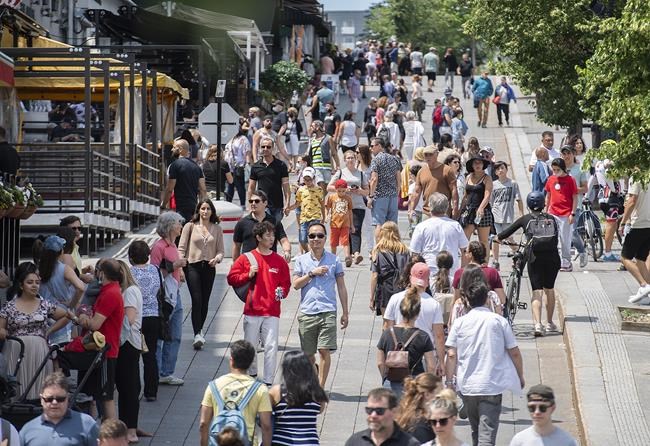Census 2021: A snapshot of Quebec’s population and dwelling data
Advertisement
Read this article for free:
or
Already have an account? Log in here »
To continue reading, please subscribe:
Monthly Digital Subscription
$0 for the first 4 weeks*
- Enjoy unlimited reading on winnipegfreepress.com
- Read the E-Edition, our digital replica newspaper
- Access News Break, our award-winning app
- Play interactive puzzles
*No charge for 4 weeks then price increases to the regular rate of $19.00 plus GST every four weeks. Offer available to new and qualified returning subscribers only. Cancel any time.
Monthly Digital Subscription
$4.75/week*
- Enjoy unlimited reading on winnipegfreepress.com
- Read the E-Edition, our digital replica newspaper
- Access News Break, our award-winning app
- Play interactive puzzles
*Billed as $19 plus GST every four weeks. Cancel any time.
To continue reading, please subscribe:
Add Free Press access to your Brandon Sun subscription for only an additional
$1 for the first 4 weeks*
*Your next subscription payment will increase by $1.00 and you will be charged $16.99 plus GST for four weeks. After four weeks, your payment will increase to $23.99 plus GST every four weeks.
Read unlimited articles for free today:
or
Already have an account? Log in here »
Hey there, time traveller!
This article was published 09/02/2022 (1402 days ago), so information in it may no longer be current.
MONTREAL – Data from the 2021 census shows that Quebec’s share of the Canadian population declined for the 11th consecutive census.
Quebec was home to 23 per cent of Canadians in 2021, down from 23.2 per cent in 2016, as its population grew by 4.1 per cent between 2016 and 2021. While that was ahead of the previous census, when Quebec grew by 3.3 per cent, it remained below the national growth rate of 5.2 per cent.
The Montreal region saw its population grow 4.6 per cent between 2016 and 2021, up from 4.2 per cent in the previous census.

Statistics Canada said that growth was driven by immigration from 2016 to 2019, but that the province’s largest urban area saw its population decline by 0.6 per cent between July 1, 2020, to July 1, 2021, as it lost people to other Quebec regions.
The federal statistics agency said downtown Montreal had the highest growth rate in the metropolitan region, 24.2 per cent. It’s the second highest downtown growth rate in the country. Suburbs more than 30 minutes from downtown Montreal grew by seven per cent, a faster pace than the other parts of the city and suburbs closer to downtown.
Here’s a look at the data:
2021 population: 8,501,833
2016 population: 8,164,361
Population percentage change: 4.1
Total private dwellings: 4,050,164
Private dwellings occupied by usual residents: 3,749,035
Population density per square kilometre: 6.5
Land area in square kilometres: 1,298,599.75
Some communities with the most growth:
Saint-Apollinaire, 30.4 per cent
Bromont, 25.6 per cent
Carignan, 24.1 per cent
Saint-Zotique, 21.2 per cent
Mirabel, 21 per cent
Some communities with the least growth:
Sainte-Anne-des-Monts, -4.9 per cent
Port-Cartier, -4.2 per cent
Baie-Comeau, -3.9 per cent
Kirkland, -3.7 per cent
Chibougamau, -3.6 per cent
This report by The Canadian Press was first published Feb. 9, 2022.
———
This story was produced with the financial assistance of the Facebook and Canadian Press News Fellowship.









